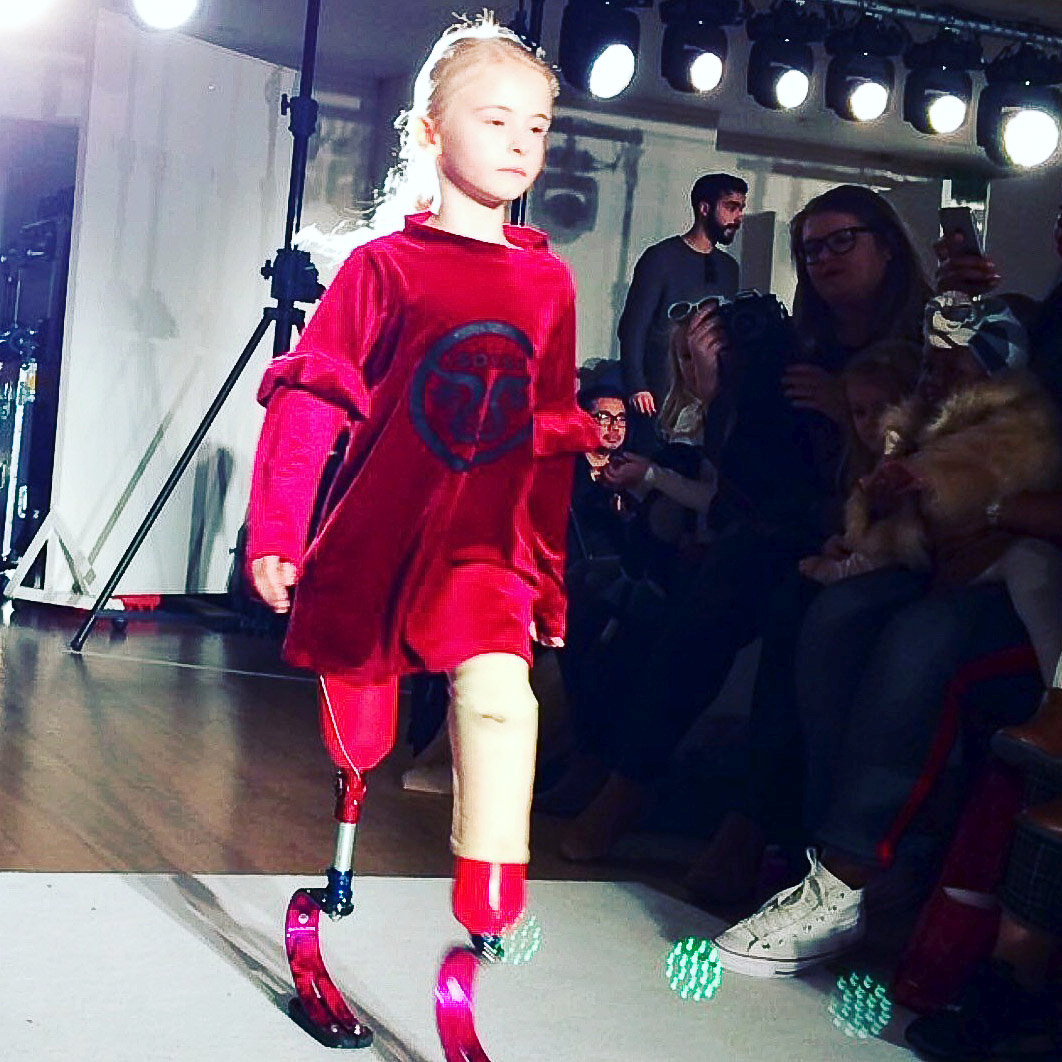Meet the inspirational seven-year-old double amputee who loves working out in the gym where she impresses everyone with her incredible gymnastic skills.
Daisy-May Demetre, seven, was born with fibula hemimelia – her lower leg bones and feet were deformed.
Her parents Alex and Claire, both 35, were given the difficult choice between watching Daisy-May grow up with deformed feet she couldn’t use – or allow a double amputation.

Hoping prosthetics would give her a better quality of life, she had her left leg removed below the knee, and the right leg removed above the knee, when she was just 18 months old.
But they never dreamed that their daughter would become a fearless gymnast, as well as a model for Britain’s largest clothing catalogue, Boden.
Brave Daisy-May has even modelled at the catwalk at London Fashion Week and turns heads when she works out at the gym with her dad.
She spins on the monkey bars, can outrun fellow gymgoers on her blades, and loves lifting weights and doing cartwheels.
Daisy-May said: “Monkey bars and cartwheels are my favourites.
“People at the gym say that they want a photo at the gym, to take selfies.
“I can do the bars, and Olympic rings, and I can lift the dumbbells – they’re heavy.
“I don’t see any girls in the gym with their dads, but they should try it.”

The self-taught gymnast is given an extra boost with her sporty blades, and lets nothing stop her.
She said: “I’ve been learning for a year. I learnt how to do it myself.
“My blades help me to run, I can beat my brothers and systems when I race them.”
Alex and wife Claire were shocked to learn that Daisy-May had grown abnormally at a baby scan – when a doctor crassly informed Claire the child would ‘have no legs.’
Later they learnt that Daisy-May would have legs, but they did not develop as they should have done – as one foot only had two toes, while the other was just a ball with a little toe coming off it.
Alex said: “We had the choice for her to live like that, with no quality of life, or to go for the operation.
“We didn’t know at the time that Daisy-May would be as good as she is now.
“At the time I was pretty isolated myself, I had a drink problem and gambling addictions.
“That has all changed around – that’s down to her taking each day with a big smile on her face.
“She motivates me and I motivate her.”
She girl got her big break in modelling when Alex was watching daytime TV when he had the day off.

He watched a feature with a modelling agency, Zebedee Management, which casts children with disabilities in ad campaigns, and got in touch on a whim.
From their Daisy-May’s career skyrocketed, and she has been inundated with interest from people wanting to cast her as a model or in ads.
But despite her prowess at the gym, Maths is Daisy-May’s favourite subject at school.
Her proud dad Alex is determined to give her the same opportunities as her able-bodied siblings, Charlie, 12, and Ella, ten.
Alex said: “Daisy-May is a double amputee but she can do more than many able bodied children can do.
“Even the gymnastics she does is all self-taught.
“If you give her a challenge, she will do it – whether it’s monkey bars or cartwheels.”

All her life Daisy-May has been defying expectations – but her family are still astonished by the challenges she takes on.
“She was told she was never ride a bike, but she came racing down the road on one the other day,” Alex said.
The family live in Birmingham, and Daisy-May trains at a gym on an industrial estate where her dad has been working out for five years.
Alex said that children often ask what has happened to Daisy-May’s legs, and he feels the best way to tell them about it is to be honest.
“Children ask ‘will her legs grow back?’,” he said.
“We invite the questions, we want people to know.
“When the kids ask, I say to Daisy ‘show them what you can do.’
“People say it is inspiring to watch.”

Recently he organised a charity boxing match, to pay for an electric wheelchair to help Daisy-May get out and about if she is tired from using prosthetics.
The modelling work Daisy-May does goes in part to securing her future, as although her ‘activity’ blades are currently funded by the NHS, they may not always be.





































